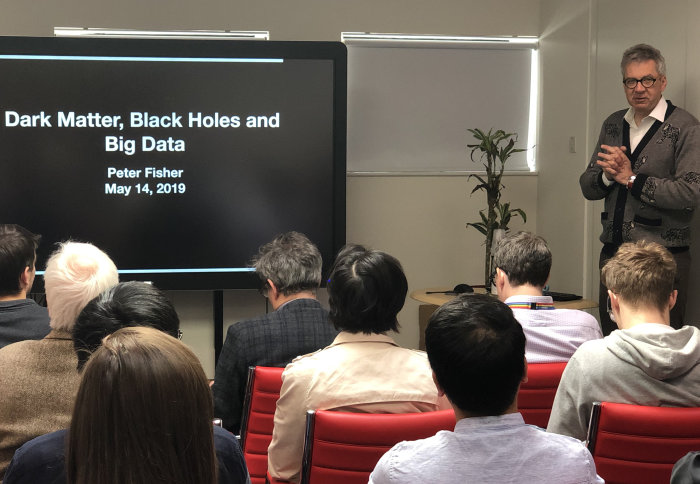Dark Matter, Black Holes and Big Data
by Anna Cupani

Professor Peter Fisher on what we know about the universe and how data science can expand knowledge in physics and astronomy.
In a packed room of the Data Science Institute in the William Penney Laboratory, professor Peter Fisher, head of the physics department at MIT, gave a captivating talk on Dark Matter and Black Holes, what we learned in the past century and what Data Science can do to help us understand more.

He reminded the audience of the fact that only 4% of the universe is "stuff we know about, such as hydrogen, helium, gold, chairs, Imperial Colleges..." with the remaining being 23% Dark Matter and 73% Dark Energy.
He then distributed a foldable paper box which reported at the back a description of its content in volume and mass in terms of particles.
Talking about computer models of galaxies, used to simulate how they would expand, he explained how the spread in galaxies velocity is much larger than their gravity would account for. The model can be correct but not say it all.
"We need new technologies to analyse data which is not homogeneous and is complex and multi-layered".
At the end of his talk, Andrew Jaffe from Imperial College’s Department of Physics gave him and the attendees a tour of the observatory using the Map of the Universe developed at the DSI by Professor Roberto Trotta and Senaka Fernando.

This impressive demo exploits the potential of the Data Observatory allowing astrophysics to interrogate large amount of astronomic data in an accessible way.
Article text (excluding photos or graphics) © Imperial College London.
Photos and graphics subject to third party copyright used with permission or © Imperial College London.
Reporter
Anna Cupani
Faculty of Engineering